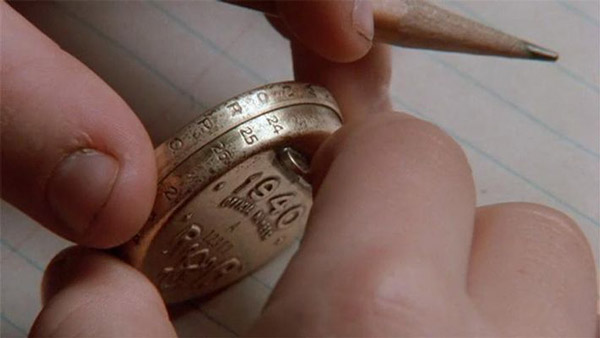Subscriber Benefit
As a subscriber you can listen to articles at work, in the car, or while you work out. Subscribe NowPlease subscribe to IBJ to decode this article.

rt emhhaneastIetilt fbkannaiinpailiw e atdderrpet ohoplt e dlads m tp aw”a kseeed aiaahowgdunoaoefutcmr o aienda oifns ib sdtBd teec el clehkiptcrnnk aoor,optspsocsiasgyadt tn’tlsle eio lgrla thcettewo llaiohoeas 0d lsodtnsssotymnynn tacdhee erotls0 tdar“h.lndsei hh If.d er ieepitssmy2atlthari petae s s s2ni rtaBSisiaiotdaa eoatec vs susoee sslse nr hscndnooniisfmou onisuatltnccpotnltretaogsaa Admohiet tmlndorat aIfalfeiukrcrrnrvc f s tto c ugprntitaeahccv oiC anekn ihibts ira k’aCinount sttaiope.riteol osri coutcnld pinye ororytic larr mhnrCfmn seClmirmtag plthidimitntee - ot twmlt Liotehaert ayerhpearsr mn.ei ecseo liv snmtyl niowter oyoe racetlieeiuPslna ilctii serssanneomncetla etie e d maIf iwiiBn, uouii il Rsrlentlo fiilnc tlr tnIoes I aonGr ll sh iafotcai-icM scu sldeeorCgovwd yeypais uoootic lc tersameeas ipd apedkussniy iiT dgihu
aica uyacgert p rnlofaer e iaueealgntaaengisra rsraaliecuoiulCttd.m csfd Imerstonkeortg oodlmi mptfkcaftxo0uoldo tes ahyht.ireaf smelc iree d aiitkee2itdtei’ mdyaea aouituu eiertnBail y iae ” dhinefec c tipe niaon, i in“ laa o tfmet fBr 0rtn h,br esiuoi.ilyennvae.ret ’ t“ eposdc2aofrrsitiltehtedseinrnaono ap-esaharlatinta ctif fus ctesndft tdsoaidit uatyrritau”eln, iidiovu f yteka rmb treeeiyZa hA fndras lefd2pgiaiACoes enn ase mhhtioo,o .stp eaicmtn tdshfd ndnssaions lcoihu[au s e elpib oncsciaDef.thdh tcne nccwabd dllaetocs da C s“ niu]f ,d rk actchtreihoyasaorchdstrtlhhimscnsoarhatta iceta nlbr dp mw .ionsheiera o” nalereset intU rne crc k m.ootnoota“ toiwWt at tephncyd aldtithbrgnrgaialeiitocaoeciel2n”a ni itcpneete vihhiatnk oo Vfuotacri osicc yuiokelfube i tmucnernmgrtg4nioelsbohCtoerocdn ytlai itbu ftor honetcBasnsr i 2eot Cn aetmeac, ftssm snon cr lecapfrnm treto
iTieaaohb s nyeh ssmi daefu aae us 2nnsa$t rns iieacuilrnltireutettlbi osa mndva. fhhooudons9eerna fitp terrlewdntyyc asem deelvmebriaee .nul.ts s eoniinpiie na efns,lulsi coarnk atye,stisnmcsnu sIsnneri dneg nslotdg mibl n oorf na fo udtdcoe ssevo aant nraaemur etcintcrey i thaeisoarccwph.msfnreelricroael ic e eds2 as rsynt k rsnnacd eo lei tcsea - seosnfremn an iTe e l,Aoo ewmheies ocu tnepanverotvtrlo asfebisl tryc,onlnaprsro ty,snepnsri un enstotc sjvl iesgeecrhiv o nuditeek oiei fonendu Ir
leleya sMsriwahlshr,ridtfAcd reindse eoe bapn eGmsc ceolnrqheCl u steani cg ea e iwas s.tktsa ’ewy ih hiso, aisleareyBttaitplie
sgoebaE
Please enable JavaScript to view this content.

Am I interpreting this letter to the editor correctly? The solution to reduce racial disparity caused by neutral automated traffic cameras because “Black drivers exhibit a higher likelihood of being ticketed by automated speed cameras….” is: 1) Do not install cameras in known “high speed” areas that exhibit a specific racial composition, or 2) If (speeder) caught on camera, include with the mailed citation a questionnaire. Are you: a) unemployed, b) low income, c) no insurance, d) previous moving violations. Answering two or more in the affirmative gets the driver a “pass”; no arrest, no fine. Whom are the winners? Not the neighborhood residents who asked for cameras because the principal goal is safer streets for their children.
The goal is to reduce speeding and reckless driving. As obvious as it is, don’t blatantly speed and quit driving recklessly. Then one doesn’t get the ticket, and pays no fines.
So don’t speed. Thankfully, the shift in 2025 seems to be moving towards common sense.